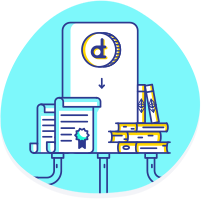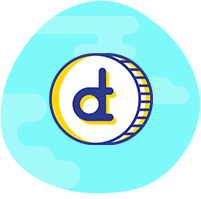The District Registry in simple terms is a list of marketplaces called districts. The list is curated by the community using district0x Network Tokens (DNT). By launching a marketplace on the District Registry, users such as buyers, sellers, and stakeholders of the marketplace gain access to a variety of services. Each district is governed by the stakeholders of that particular district. The intended purpose of the registry is to curate highly useful peer-to-peer marketplaces that are governed by their stakeholders, as well as reject any malicious districts through community voting.
Why Create a District?
There are 4 main reasons why it is beneficial for a marketplace to become a district:
- Network effects – new districts are visible to the entire district0x community, including users of other districts, accelerating adoption and growth
- Bonding curves – creators have powerful cryptographic governance incentives at their disposal to drive early contribution
- Aragon Integration – creating districts automatically generates corresponding Aragon entities, where a range of enhanced governance features are enabled (Read more here)
- Ancillary services – additional capabilities like escrow will be provided for all participating districts
How to Create a District
Creating a district is simple and permissionless. The creator of the marketplace can use the submission page in the District Registry application to form their new district. This will require a deposit of DNT along with any relevant links, logos, descriptions, URLs, as well as the choice of bonding curve, explained in more detail below. The marketplace then immediately becomes a district in the registry and users may begin staking.
Staking
When the district is created there are 3 types of bonding curves the creator will choose from (upon initial launch, flat curve staking will be available with linear and exponential staking made available in the future). The 3 types of bonding curves are:
- Flat – No change in staking power distributed to any given staker
- Linear – Higher staking power distributed to earlier stakers, decreasing linearly
- Exponential – Highest staking power distributed to earlier stakers, decreasing exponentially
As soon as a district is added to the network, a corresponding Aragon entity is created, allowing token holders to stake their DNT to the district. When DNT is staked, district0x voting tokens (DVT) are dispensed to the staker. With these votes, the stakers may vote on everything ranging from a district’s branding and design decisions, to what external functionality is added to the district, to the appropriate settings for any adjustable parameters, to the means in which any revenue collected by a district is to be distributed. DNT can be unstaked from a district, revoking a proportional amount of voting tokens received from staking, but allowing the staker to use their DNT elsewhere. If the district becomes obsolete or is acting maliciously, DNT holders are incentivized to challenge the district.
Challenging and Voting
In order to police the District Registry for bad actors, DNT holders can initiate a challenge. After a district enters the registry, any DNT holder can match and risk their tokens against the creator’s deposit, to challenge its spot. Once challenged, the district enters a voting period, where other DNT holders can vote to keep the district or kick it out.
If a challenge results in upholding the district’s place in the registry, the challenger loses their deposit, and voters on the winning side split the reward. If the district loses the challenge, it is removed from the registry and placed into a blacklist, and both the challenger and winning voters receive DNT as a reward. Once blacklisted, a district is no longer considered eligible for District Registry services. Token holders who were staked to the district when it entered the blacklist can unstake at any time. However no new stakes can be made, and all governance activity ceases.
By creating an incentive structure with these rewards, the network can perpetually regulate itself. Everyone is incentivized to see good districts kept so users must be careful to only challenge districts with real opposition. The end result is a system that efficiently deters bad actors from abuse while leveraging the strength of the community to make hard decisions for the gray area in between.
What’s the point?
The real power behind the District Registry is that it bends to the whims of the voting token holders. Whether through the challenge process to determine the marketplaces within the district0x network, or staking and voting on particular outcomes for a given marketplace, the District Registry is the central hub that makes it all happen.







